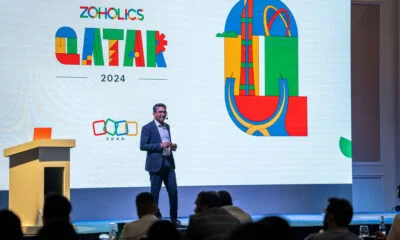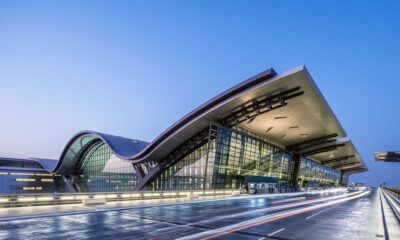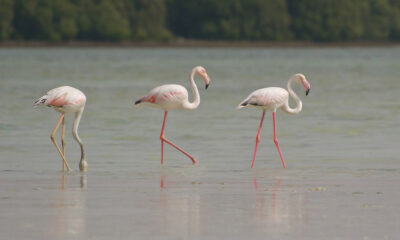News
The Technology Powering Qatar’s FIFA World Cup 2022
A series of technology firsts will help make the World Cup a more immersive event for football fans, boost Qatar’s sustainability credentials, and help to keep the scorching heat at bay.
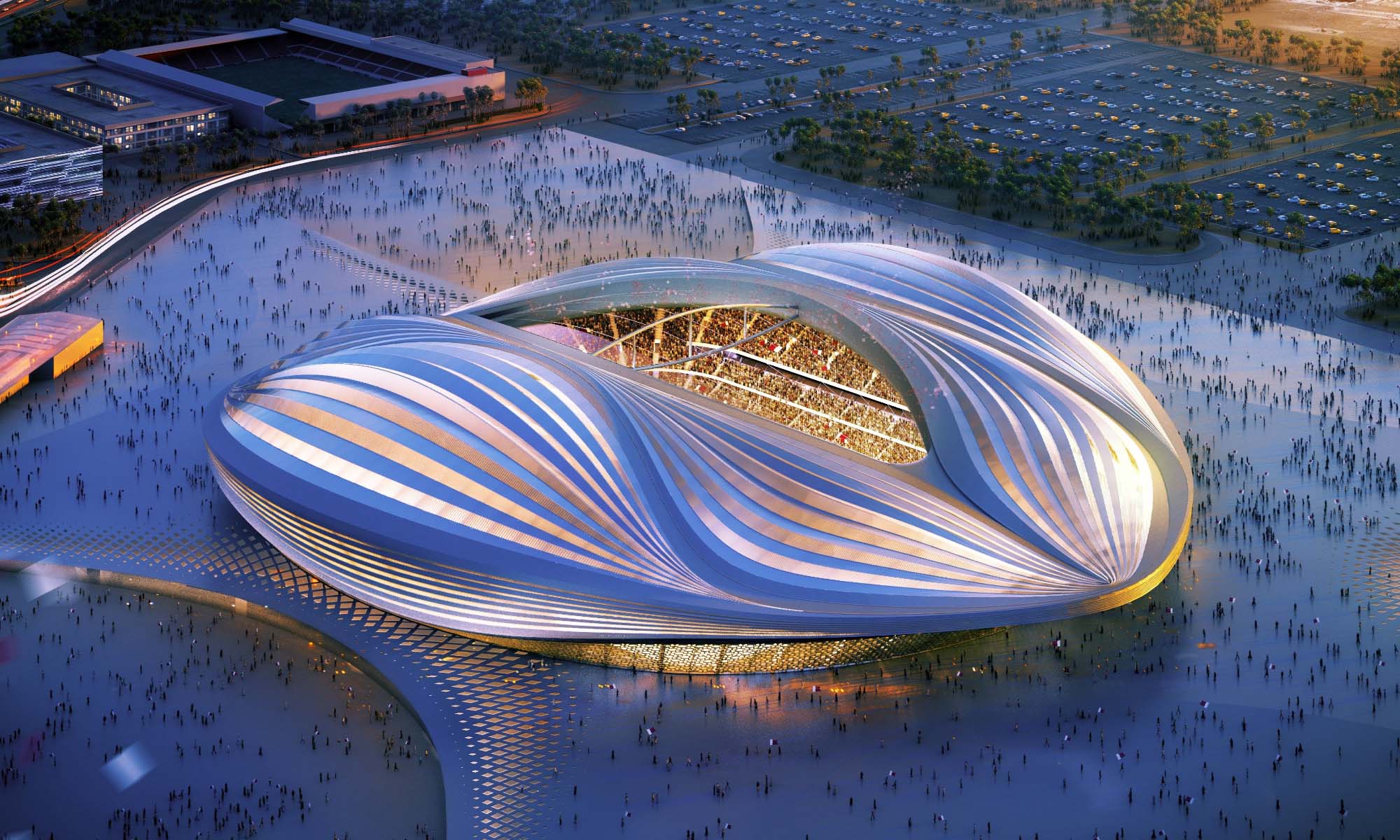
Qatar is the smallest nation to host a World Cup tournament, and it’s also the first Middle Eastern country with the same honor. As well as being notable as an “out of season” event, the FIFA World Cup 2022 will also feature several technological innovations.
Here are some of the more exciting examples we’ve unearthed so far:
Robo-Ref
The most notable feature of Qatar 2022 will likely be the high-tech match balls, which have been upgraded with FIFA’s “Semi-Automated Offside Technology”, an enhanced version of existing VAR systems (video assistant referees).
The official ball of the tournament is called “Al Rihla” (Arabic for “The Journey”) and is packed with the latest Adidas Suspension System, which can log its position on the pitch at a staggering 500 times per second. Each venue will be installed with 12 dedicated cameras to monitor the ball position and 29 points of each player’s body, with AI processing data in real time.
As well as helping with contentious match decisions, the new technology will also be used to create dynamic replay animations that can be displayed during broadcasts, or on the big screens of the event’s stadiums.
Advanced Stadium-Cooling
The temperatures of a Qatari summer are no joke at the best of times, and could prove debilitating for spectators and potentially deadly for pro footballers.
Saud Abdulaziz Abdul Ghani from Qatar University‘s College of Engineering has come up with an answer that mimics how a car’s air-con system works. The ingenious invention uses a mixture of insulation and “targeted cooling” through grills in the stands and nozzles on the pitch. The result is improved air circulation, which can be filtered, cooled to 18 degrees Celsius, and pushed back into the stadium.
The technology is thought to be up to 40% more sustainable than a traditional cooling system. It only needs to be used two hours before an event, reducing energy consumption considerably over conventional methods. Along with high-tech retractable roofing, Dr. Saud hopes that stadiums around the globe will eventually adopt his inventions.
A Lego-Style Stadium
The Lusail Iconic Stadium is undoubtedly the most prestigious venue of the FIFA World Cup 2022 event. However, another stadium at Ras Abu Aboud, known as “Stadium 974,” takes the prize for ingenuity.
Qatar’s government was keen to avoid building venues that were of limited appeal to the community after the event had finished. To that end, Stadium 974 is the first collapsible venue to feature in the World Cup, being constructed from repurposed shipping containers.
The 974 containers (hence the name) have been modified to hold seating, bathrooms, and every other element of a stadium, with the intention that they can either be rebuilt into several smaller venues or sent overseas for future events.
According to FIFA, the Stadium 974 concept brings a new level of sustainability to football stadium design. However, it should be noted that the vast Lusail Iconic Stadium will also eventually be repurposed as the centerpiece of a new metropolis to be known as Lusail City. The stadium’s infrastructure is set to be converted into a community space, with schools, shops, cafés, sporting facilities, and health clinics.
News
1,000 Drones Light The Dubai Sky For AC Milan Celebration
Cyberdrone’s groundbreaking display marked 125 years of AC Milan football club and the 1st-year anniversary of Casa Milan Dubai.

Cyberdrone, a leading UAV display company based in Dubai, put on a breathtaking drone light show on Monday to honor two significant football milestones: AC Milan’s 125th anniversary and the one-year anniversary of Casa Milan Dubai.
The spectacle involved 1,000 drones working in perfect harmony to project AC Milan’s iconic imagery against the city’s night sky. Highlights included the UAVs synchronizing to form the club’s iconic crest, the signature red and black jersey, and a special emblem marking its 125th year. The intricate performance demanded meticulous planning, not just in terms of choreography, but also in dealing with the necessary permits and logistics.

“Our goal was to spotlight AC Milan’s legacy through a stunning visual narrative,” explained Mohamed Munjed Abdulla, Director of Sales at Cyberdrone. “We celebrated the club’s history, its Dubai milestone, and the universal love for football. The show also enhanced AC Milan’s regional presence, growing its fanbase through a cutting-edge, memorable experience. Drone shows are unparalleled in leaving lasting impressions, making them perfect for driving partnerships and growth”.
Also Read: Joby Begins Construction Of Dubai’s First Vertiport For Air Taxis
Greta Nardeschi, AC Milan’s Regional Director for MENA, echoed the sentiment, adding: “Collaborating with Cyberdrone for this 1,000-drone performance allowed us to connect with our fans in innovative ways. It gave us a unique opportunity to surprise and inspire audiences while elevating our Club’s visibility and that of our partners. Cyberdrone truly helped us take AC Milan to new heights”.
This groundbreaking drone display sets a new benchmark for the Middle East’s sports sector, which already contributes around $2.4 billion annually to Dubai’s GDP alone. Sporting events also generate $1.76 billion in revenues across the region, while the MENA’s entertainment sector, valued at $41.13 billion, is growing at 9.41% annually, driven by rapid technological advancements.
-
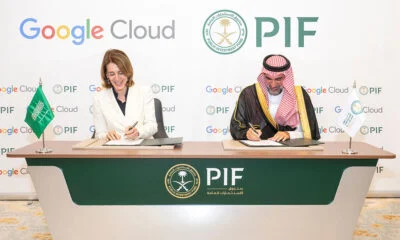
 News2 weeks ago
News2 weeks agoGoogle To Launch AI Hub In Saudi Arabia, Aiming For $71B GDP Boost
-

 News1 week ago
News1 week agoPopcorn AI Raises $500,000 For “Conversational eCommerce”
-
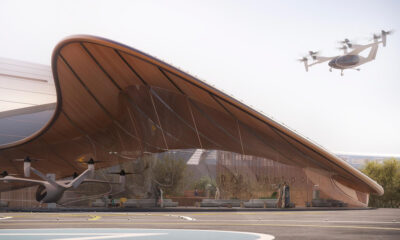
 News1 week ago
News1 week agoJoby Begins Construction Of Dubai’s First Vertiport For Air Taxis
-
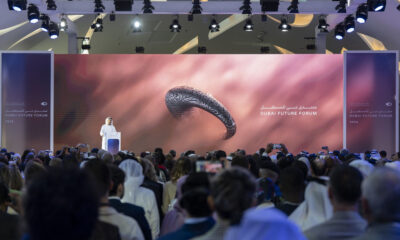
 News3 days ago
News3 days agoDubai Future Forum 2024 Welcomes An Era Of Transformative Change


